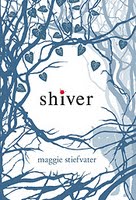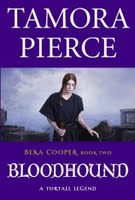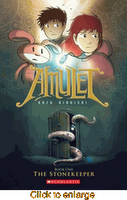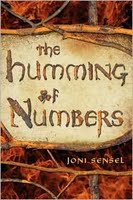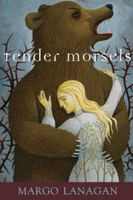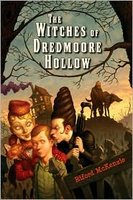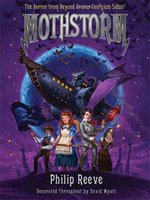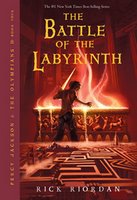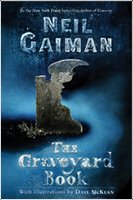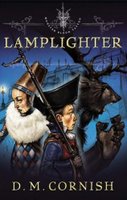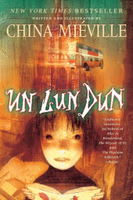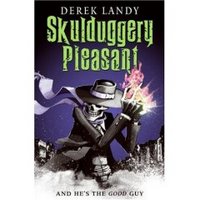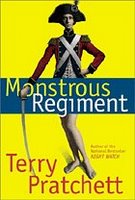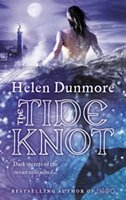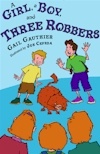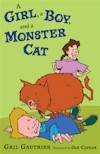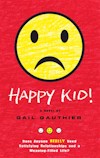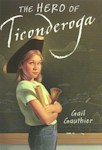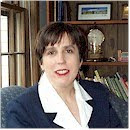At Last, The Chrestomanci Post

Okay, here it is, that Chrestomanci post I've been talking about.
Chrestomanci is a title held by a character named Christopher Chant who appears in six books and four short stories by Diana Wynne Jones. The universe of the book is made up of multiple worlds in which magic may or may not exist to varying degrees. The person who holds the title Chrestomanci is always an enchanter with nine lives, and his function is to "police" the use of magic. He's a government employee, actually.
The novels are available these days in three volumes, each containing two books. The short stories, I believe, are out of print. I got a copy from a library and then bought a beautiful paperback from an on-line dealer.

I have to admit, I found some technical glitches with these books:
Some may find this nitpicky, but I noticed from the very first book that Wynne Jones uses a noticable number of "echoes." Echoes occur when an author uses a word two or more times within a couple of sentences, making the second word strikingly noticeable to the reader. Echoes break flow, unlike parallel construction, which sort of forces flow to follow a certain flow. (Echo!) Echoes are usually caught by copy editors, which is why I know about them. Copy editors have caught (most) of the ones I've made in the past.
Chrestomanci is one of those Pimpernel/Wimsey like characters who appear to be far less powerful than they are. In Chrestomanci's case, he is often described as looking vague or appearing to be vague. That is a sign, for the people who know him, that he is on top of his game. The word "vague" is used to describe him so frequently that it becomes an annoying mannerism--like when a character is constantly adjusting her glasses or rolling his eyes. I also sometimes wondered if it really described anything. What the heck does vague mean in this context?
Some people might think that some of the boy main characters--Cat, young Christopher, and the Italian kid whose name I can't remember--seemed a bit alike. And some of the books include explanation scenes at the end, sort of like when the detective explains everything at the end of a mystery novel.
But as I said, those are all technical things. What is interesting and attention-grabbing about these books might be described as their more conceptual aspects.
Chrestomanci is a charismatic, adult character in a children's book. However, in most of his books, he is not the main character. The main characters are always children who are discovering who they really are. In fact, in the only book in which he is the main character, Chrestomanci is a child. What's more, though Chrestomanci appears to fix problems related to magic, he usually cannot do so without the assistance of child characters. He is not a grown-up who simply waves a magic wand and makes everything okay. There is no doubt whatsoever that these are kids' books, in spite of his presence.
Though these books always involve child characters discovering that they have magical abilities, and though there is a recurring adult character, the books are very different. Yes, the world building is the same, but the storylines are different, and the settings are often much different.
Chrestomanci is used differently in different books and stories. In one book, the young Christopher Chant is the main character. In another, the adolescent Christopher Chant is important, but not the first-person narrator. (I believe that was the only book with a first-person narrator.) In other books the adult Chrestomanci is a major player. In some he doesn't appear until more than halfway through the book. In one of the short stories, he doesn't appear at all--he is mentioned twice. As a writer, I love the idea of using the same character in different ways. I love trying out a first-person narrator after having used a third for so many books.
These six books are not a serial, meaning we're not talking one giant story told over six books, which must be read in a particular order or nothing makes sense. Though Wynne Jones is supposed to have suggested an order for reading the books, and they are available now as Volumes I, II, and III, suggesting an order, I actually read the most recently written book first, then Volumes II, I, and one of the books in Volume III. I can't remember at what point I read the short stories. My point (echo!) being, a reader can truly just enter this world and move about in it because the stories are each unique.

Power is not related to beauty in these books. Though Chrestomanci, himself, is an attractive man, his love interest is a plain girl (and then woman) who is a very powerful enchantress. She is very necessary to him. The children they have together are not traditionally physically attractive children. I love this.
As a reader who came late to fantasy and still, as a general rule, doesn't care for what's termed high fantasy, I'd have to say that reading these books was educational. These books aren't just a hodge podge of fantastical gimmicks. Character, plot, and setting, elements that are important to all fiction, really need to be seriously addressed in a fantasy novel. And it seems to me that they are here.
On the other hand, these were my comfort books, and perhaps I just want to think well of them.
Labels: Diana Wynne Jones, fantasy, Reader response
